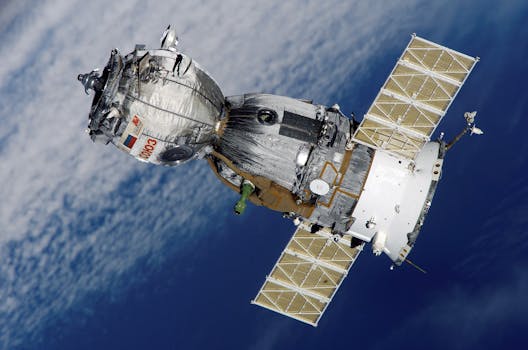
Orbiting Innovations: Exploring the Latest in Earth-observing technology
Earth-observing technology has come a long way since the launch of the first weather satellites in the 1960s. Today, Earth-observing technology is a vital tool for monitoring the health of our planet, from tracking climate change to predicting natural disasters. In this article, we’ll explore the latest innovations in Earth-observing technology and how they’re transforming our understanding of the planet.
The Evolution of Earth-Observing Technology
The first Earth-observing satellites were launched in the 1960s, with the primary goal of monitoring the weather. These early satellites were equipped with basic cameras and sensors that provided limited resolution and data. However, they paved the way for the development of more advanced Earth-observing technologies. In the 1970s and 1980s, satellites like Landsat and SPOT were launched, providing higher resolution images and more detailed data on the Earth’s surface.
Modern Earth-Observing Technology
Today, Earth-observing technology has become increasingly sophisticated, with the launch of satellites like Planet Labs’ Dove and SkySat, which provide high-resolution images of the Earth’s surface. These satellites are equipped with advanced sensors and cameras that can capture detailed images of the Earth’s surface, including vegetation, water, and soil moisture. Other satellites, like NASA’s Landsat 8 and the European Space Agency’s Sentinel-2, provide data on the Earth’s climate, including temperature, sea level rise, and ocean currents.
Applications of Earth-Observing Technology
Earth-observing technology has a wide range of applications, from environmental monitoring to disaster response. For example, satellite data can be used to track deforestation, monitor ocean pollution, and predict natural disasters like hurricanes and wildfires. Earth-observing technology can also be used to support sustainable development, by providing data on crop yields, water resources, and land use. In addition, satellite data can be used to support disaster response efforts, by providing critical information on damage assessment and relief efforts.
Conclusion
In conclusion, Earth-observing technology has come a long way since the launch of the first weather satellites. Today, this technology is a vital tool for monitoring the health of our planet, from tracking climate change to predicting natural disasters. As Earth-observing technology continues to evolve, we can expect to see even more innovative applications and uses for this technology, from supporting sustainable development to enhancing disaster response efforts. With the latest innovations in Earth-observing technology, we’re poised to gain a deeper understanding of our planet and its many complexities.
